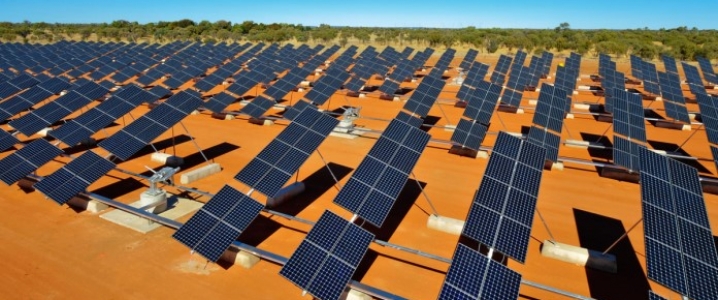Renewable energy is growing at a blistering rate, but clean energy is also nowhere near what is needed to avoid some of the worst effects of climate change, according to a series of new monumental reports on the global energy system.
Renewable energy accounted for half of the increase in new electricity generation in 2017, a remarkable feat, according to a new report from the International Energy Agency (IEA). By 2023, renewables will account for 12.4 percent of total global energy demand (not just for electricity), a sign that the adoption of wind and solar around the world is gaining steam. In the transport sector, electric vehicles and electric buses triple over the next few years.
Solar and wind are the cheapest option in a growing number of places around the world and EV sales are skyrocketing.
Here are a few more staggering statistics. Between 2017 and 2023, renewables will cover a full 40 percent of the additional growth in energy consumption. And by 2023, renewables will account for nearly a third of total electricity generation worldwide.
Solar PV will move front and center over the next few years, the IEA argues. Solar PV is expected to grow by 600 gigawatts through 2023, having already jumped by 97 GW last year. That 600 GW is equivalent to twice the size of Japan’s entire capacity.
Within the solar sector, distributed solar “makes the difference,” the IEA says. Without the distributed solar projects, solar’s expansion would be equal that of wind. But a growing number of commercial, industrial and residential applications are putting more solar panels at the local level.
Behind this explosive growth for renewables is the dramatic cost declines that make renewables increasingly the cheapest option. “For the first time, more than half of renewable electricity capacity is expected to be commissioned through competitive auctions, which continue to slash wind and solar PV bid prices to between USD 20 per megawatt hour (MWh) and USD 50/MWh,” the IEA wrote.
Geographically speaking, China accounts for the lion’s share of growth, and will be home to 40 percent of the world’s solar PV. Meanwhile, Brazil is expected to still have the greenest energy mix in terms of percentage, with 45 percent of its final energy consumption coming from renewables by 2023. Related: US Demands For More Oil Could Backfire
These are impressive numbers by any measure. But they are also wholly inadequate to meet global sustainability goals. Even though there is significant progress, renewables are expected to continue to lag in transport and heating, two sectors that are stubbornly dominated by fossil fuels. The bottom line is that on the current trajectory, the IEA says that renewables will only account for 18 percent of overall energy consumption in 2040.
That’s a grim number, especially in the context of a separate report from the UN’s Intergovernmental Panel on Climate Change, which finds that limiting global temperature rise to just 1.5 degrees Celsius “would require rapid, far-reaching and unprecedented changes in all aspects of society.” It’s a scenario that looks increasingly out of reach.
One of the key takeaways from both of these reports is that while there is stunning progress in the electricity sector – and indeed, it looks increasingly likely that solar and wind combined with energy storage will take over large shares of global electricity in the years ahead – fossil fuels remain deeply entrenched in many other sectors. Related: New Breakthrough Could Slash Solar Prices To New Lows
The IEA has repeatedly raised the prospect of strong oil demand growth in the petrochemical sector. The proliferation of plastics means that petrochemical production will take over from transportation as the source of the most oil demand growth going forward, offsetting the gains made in passenger vehicles. In addition, the use of oil in marine, air and freight transit will remain stubbornly high and very hard to dislodge.
Moreover, heating is another area where renewables remain far behind. The IEA said this is a major “blind spot” that receives very little attention. But the good news is that bioenergy, which includes plant-based fuels, gas from anaerobic digestion and wood pellets, is on track to grow significantly. “Modern bioenergy is the overlooked giant of the renewable energy field,” said Fatih Birol, the IEA’s executive director. “We expect modern bioenergy will continue to lead the field, and has huge prospects for further growth.” The IEA cautioned that these forms of energy should only come from feedstocks that don’t carry their on environmental and social pitfalls.
Overall, in business terms, renewable energy is set for massive growth and will only improve the competitive edge over fossil fuels with time. But the pace of energy transition is still worryingly slow, which has dire implications for the planet.
By Nick Cunningham of Oilprice.com
More Top Reads From Oilprice.com:
- North Sea Oil Renaissance Could Flop
- Is The U.S. Using Force To Sell Its LNG To The World?
- The Overlooked Giant In Renewables



















We can focus on our shortfall from where we need to be, and feel depressed.
We can rely on government action, and without a doubt fall short.
Individual businesses, citizens and coalitions are our best hope for planet Earth.
Emotions drive the renewables crusade. People who know how grids work and fail do not favor them so much.